Athens is one of the oldest continuously inhabited cities in the world. People have lived here starting between the 11th and the 7th centuries BC. It’s also therefore one of the oldest capitals of Europe. But much more than this – Athens is the birthplace of Western Civilization. It is not just a historic location, but also a spiritual foundation. Athens is more than simply a city – it also represents an ideal.
Here are some things that Athens is most famous for – from ancient times to our contemporary days.
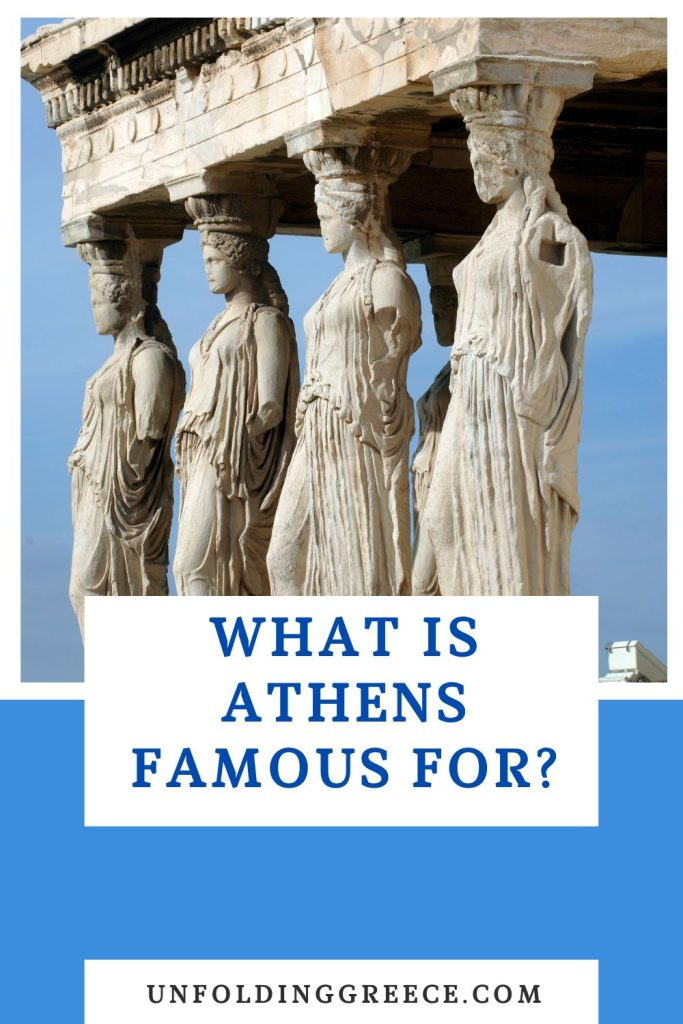
6 Things Athens is Famous for
1. Archaeological Sites
The Acropolis
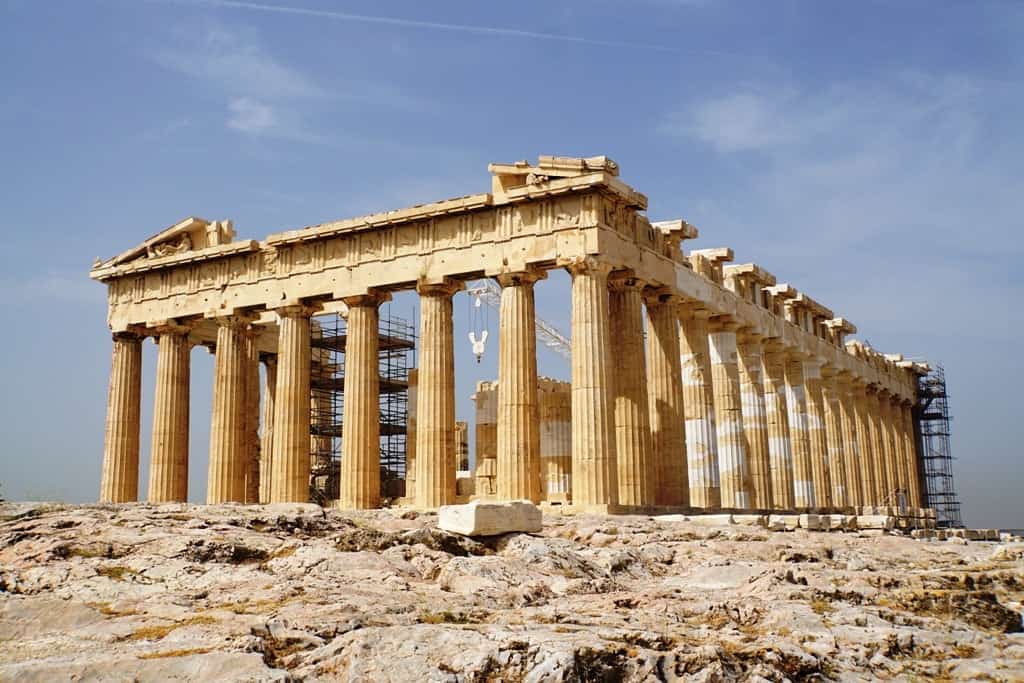
One of the world’s most significant sights, the Acropolis is a historic and architectural treasure. This is not the only Acropolis in Greece by any means – the word means the highest point in a city – site of many citadels and monuments. But when we hear the word Acropolis, we’re always thinking of the Acropolis of Athens.
The Acropolis is therefore not a building, but the entire plateau that rises above the Plaka district. There is not one building up here, but several. The most famous of course is the Parthenon, joined by the Propylaia – the monumental gate, the Temple of Athena Nike, and the Erechtheion – the temple best known for the Caryatids.
All of these were built under the reign of Pericles, during what is called the Golden Age of Athens – around 460 – 430 BC. The architects were Callicrates and Ictinus. The great sculptor Phidias created the “Athena Parthenos” – the great statue inside the Parthenon – as well as the famous marbles of the Parthenon frieze, many of which were removed at the beginning of the 19th century by Lord Elgin, and are now in the British Museum.
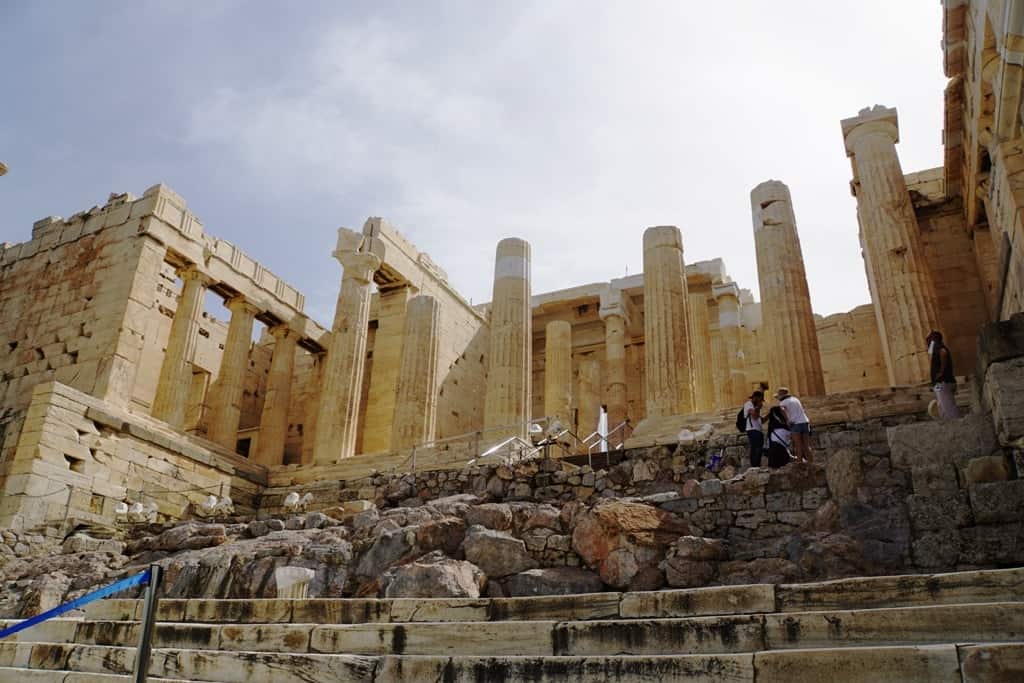
Standing here in this sacred spot, we can only think of Ancient Greece. But in fact, the Acropolis continued to be a sacred place after the time of the Ancient Greeks. During the Byzantine era, the Parthenon was a Christian Church, dedicated to the Virgin Mary. When the Latin Duchy of Athens was founded in 1205, the Parthenon became the Cathedral of Athens. The Ottomans conquered Athens in the 15th century, and the Parthenon was converted into a mosque.
After the Greek War of Independence, the vestiges of the interventions – Christian and Muslim alike – were removed from the Parthenon, in order to restore it as much as possible to its original spirit.
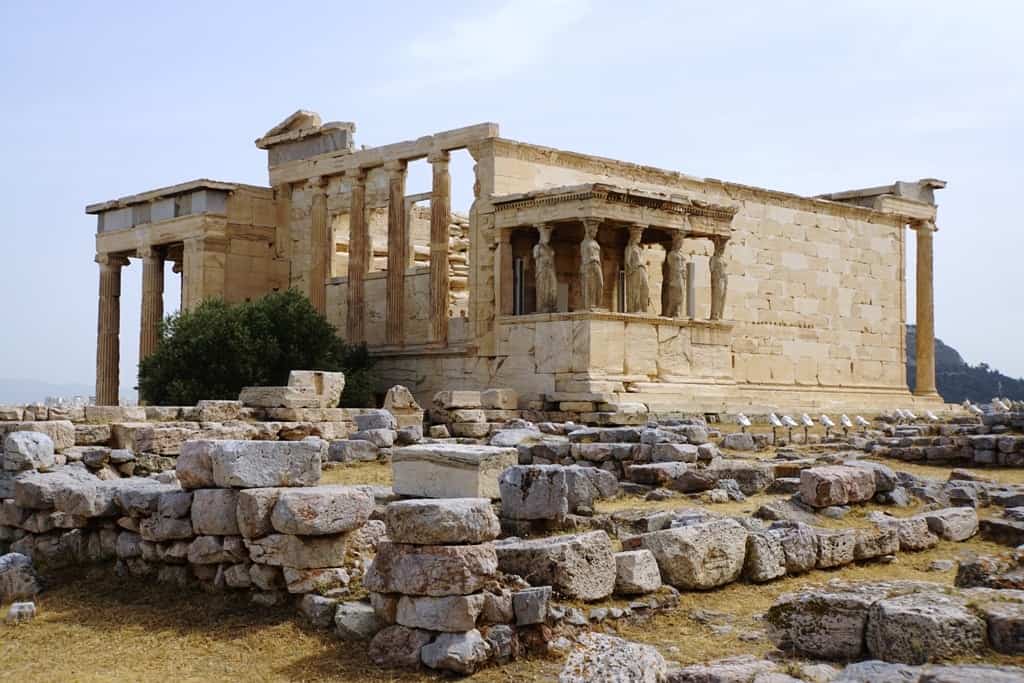
A visit to the Acropolis – a treasure of the Western World and a cultural pilgrimage – is for many the highlight of a trip to Greece. To make the very most of your own visit, try to rise early and get to the Acropolis when it opens, especially if you visit in the summer, in order to beat the intense heat of the day and to beat the crowds for a moment of reverence and contemplation. Prepare to be inspired.
The Ancient Agora
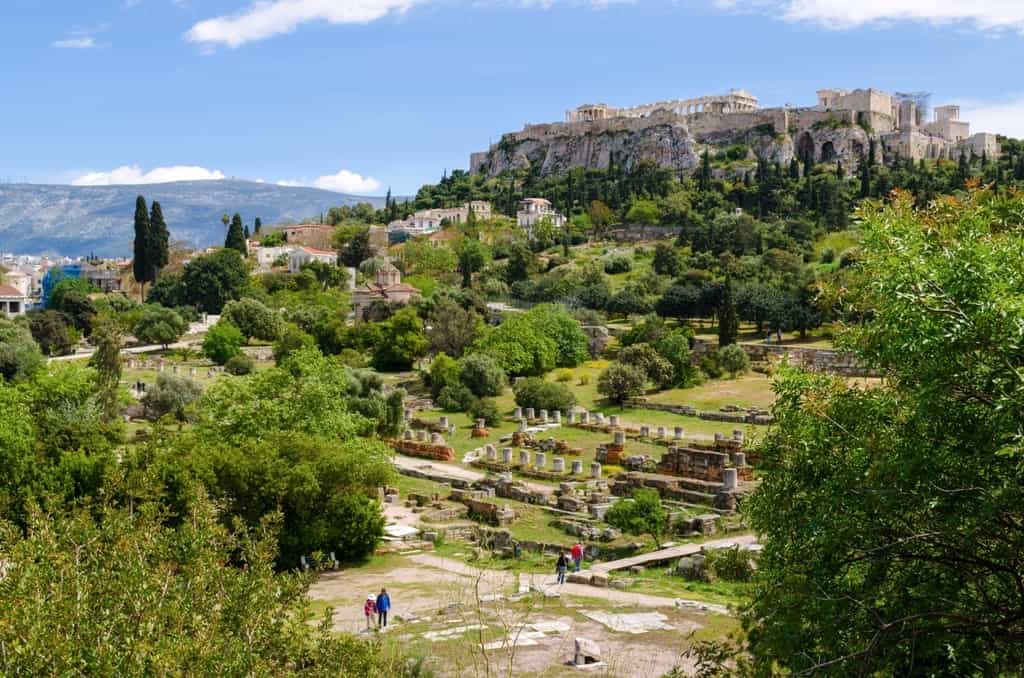
The Parthenon and surrounding buildings are of course just some of the many fascinating archaeological sites in Athens. To get a sense of the daily life of the ancient Athenians, a visit to the Agora is invaluable.
Wander among these ancient grounds and look for the water clock, the ‘tholos’ where the representatives of government stayed and the weights and measures were kept, and the ‘bouleuterion’ – the assembly house where the government convened (see more on this below), the gymnasium, and several temples.
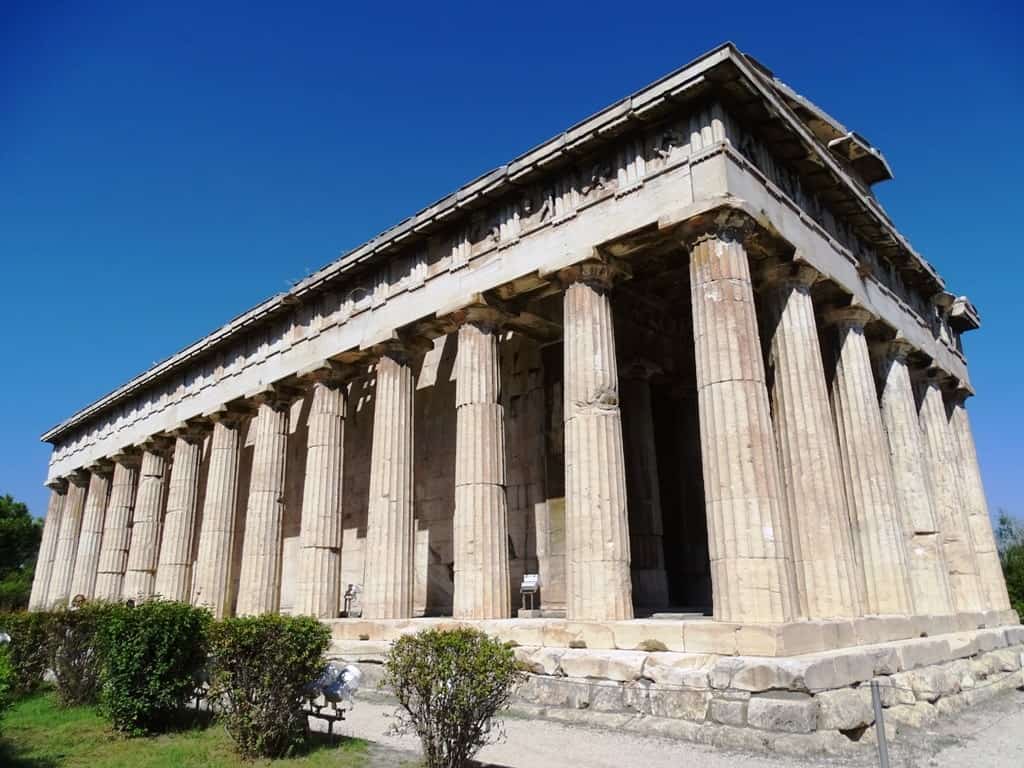
The most magnificent and best-preserved of these is the Temple of Hephaestus – otherwise known as the Thisseon – on high ground overlooking the rest of the Agora. Hephaestus was the patron god of fire and metalworking, and many such craftsmen were in the vicinity.
The Temple of Olympian Zeus and Hadrian’s Gate
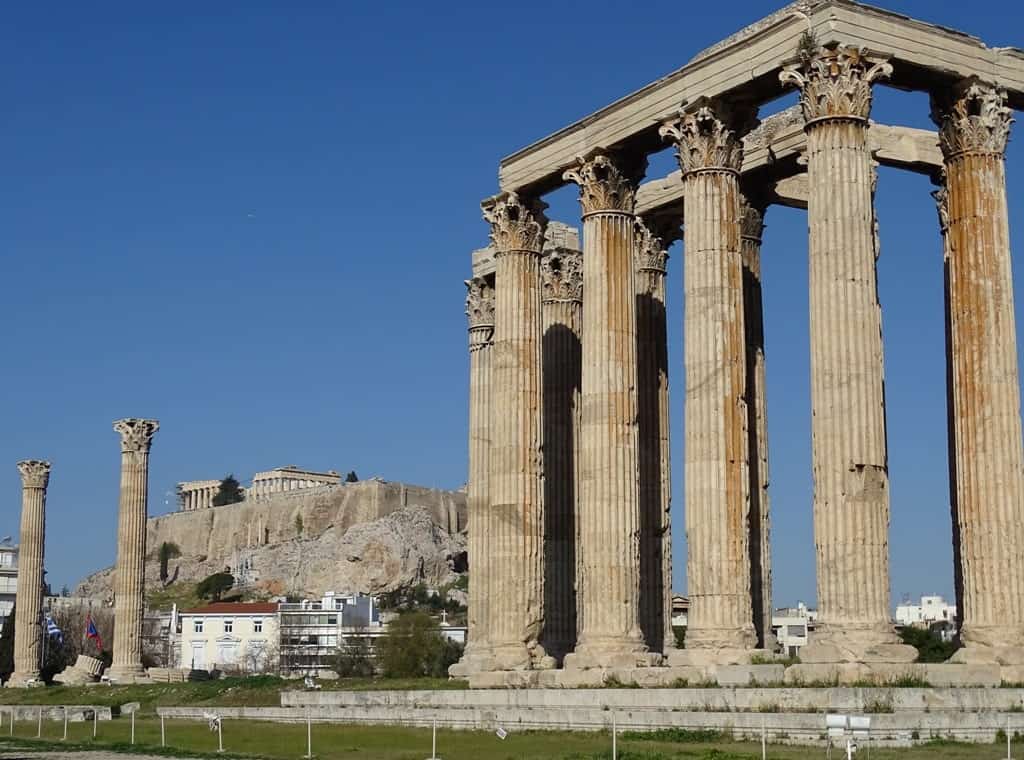
At the edge of the National Gardens is the spectacular temple of Olympian Zeus that predates the Parthenon. It was begun in the 6th century BC. However, it wasn’t completed until over six centuries later, during the reign of Roman Emperor Hadrian.
It had 104 massive columns, making it the largest temple in Greece, housing also one of the largest cult states of the ancient world. Enough of the columns still stand to give one an idea of the magnitude of the awe-inspiring structure.
The Roman Arch of Hadrian spanned the road leading to the grand temple and represented a monumental entrance to the grand temple complex. It is one of the most familiar sights of Athens.
The Roman Agora
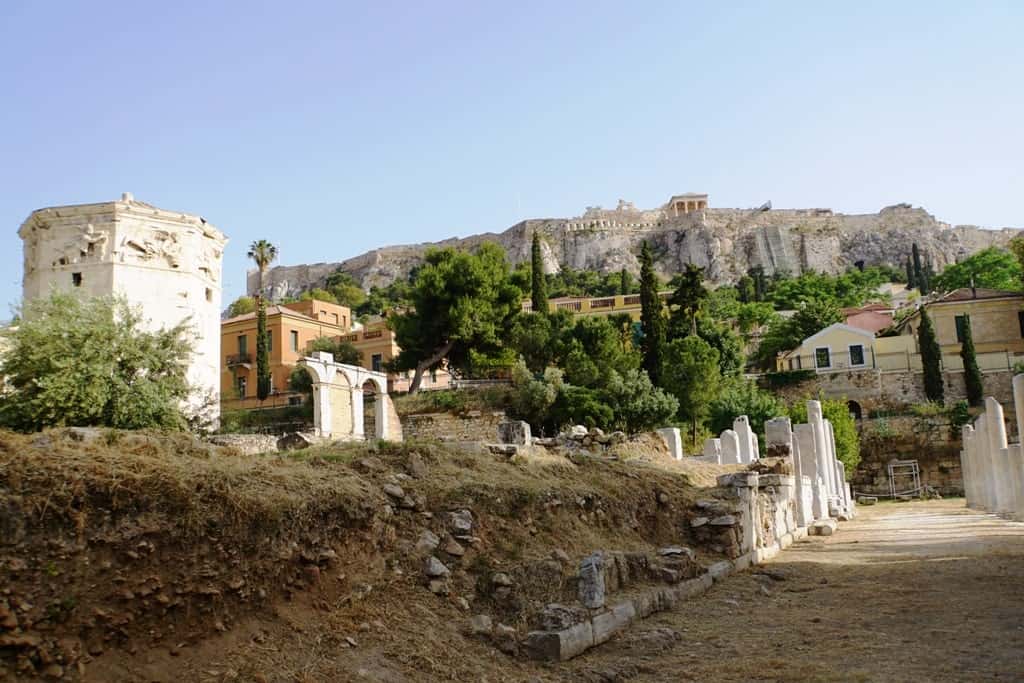
At the heart of Athens by the charming neighborhood of Monastiraki is the complex of the ancient Roman Agora. The gate of Athena Archegitis and the House of the Winds are among the most recognizable and loveliest of the monuments among the many picturesque ruins. Hadrian’s Library is very close by.
2. The Athens Marathon
Today, there are Marathons run all over the world. This demanding race of some 42 kilometers (about 26 miles) is also an Olympic event. But, although the race has its origins in the history of Ancient Greece, it was not a part of the original Olympic Games.
The original marathon has a more interesting backstory. While today we think of a Marathon as being a race of a certain length, “Marathon” actually refers to a place – the town from which the legendary first “marathon” began. The story of the first Marathon brings us back to the 5th century BC and the years of the Persian wars.
The battle of Marathon was Persian Emperor Darius’ first attack on the Greek mainland, and thanks to the skill of the Athenian army under the command of General Miltiades, it went poorly for the Persians. Their defeat – so dangerously close to Athens – was welcome news that couldn’t be delivered soon enough.
Pheidippides – sometimes called Philippides – was the messenger who was dispatched to announce the victory. He’s said to have run all the way from Marathon with the excellent news. Some accounts say that these were his last words, as he then succumbed to exhaustion.
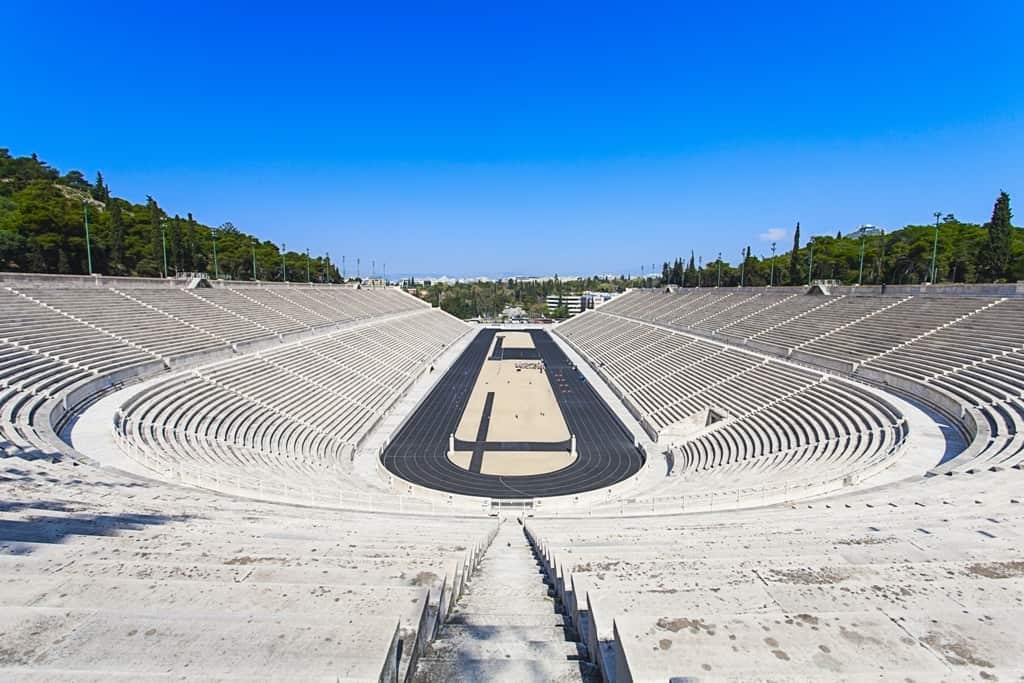
The Marathon Race in Modern Athletics
The idea of commemorating the legendary first marathon and the great Athenian victory was a perfect fit for the spirit and philosophy of the Modern Olympic Games.
The Olympics were reborn in 1896 in their original birthplace – Greece. Prominent benefactor Evangelos Zappas was instrumental in reviving the games. One of Athens’ prominent monuments – the Zappeion in the National Gardens – was built for these modern games.
And the Stadium where they were held was beautifully restored. The Panathenaic Stadium– popularly also called Kallimarmaro – was built in 330 BC for the Panathenaic Games, and rebuilt in marble by Herodes Atticus in 144 AD.
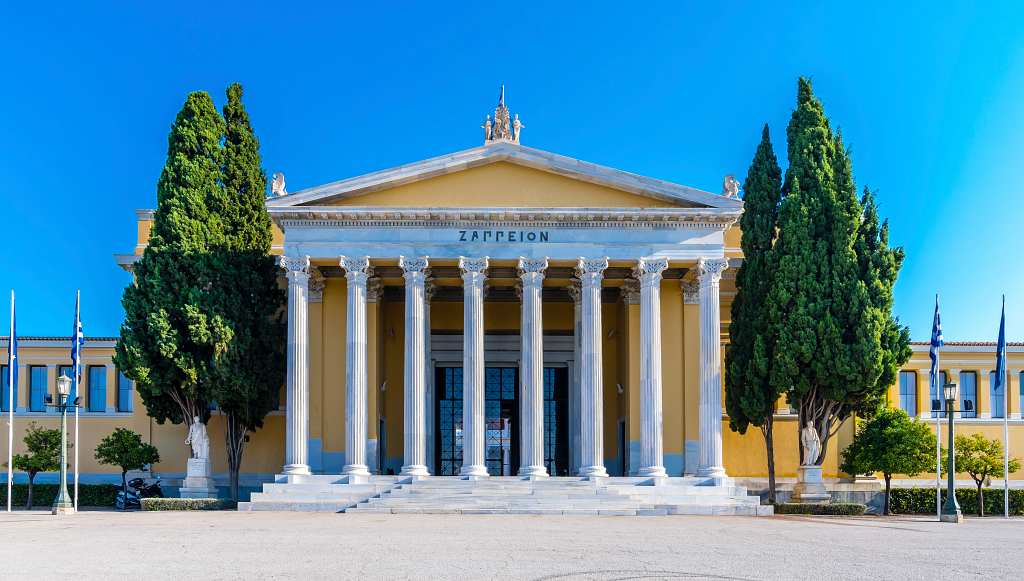
14 nations participated. The modern games were organized by the International Olympic Committee, which was overseen by Pierre de Coubertin, a French historian, and educator. And it was another Frenchman – the student of Greek Mythology and Classics Michel Breal – who proposed the idea of holding a race honoring Pheidippide’s original route with the news of the historic victory.
This first official Marathon did in fact start in Marathon, and end in Athens. Who was the victor? By happy circumstance, it was a Greek – Spiridon Louis – much to the joy of the Greek people.
The Marathon Today
In April, from 1955 until almost 1990, there was the Athens Marathon, beginning in the town of Marathon. The Athens Classic Marathon – the race we know today – began in 1972.
This is one of the world’s most challenging marathon courses. Several portions of the race are uphill, including some quite steep ascents well into the race close to the 30 kilometer mark. But the rewards are considerable. Not only do athletes pass the tomb of the Athenian soldiers, but they finish the challenge in the historic Kallimarmaro Stadium in Athens.
3. Democracy
One of the most treasured ideals of the modern world is the concept of a government of the people. This beautiful idea was born in ancient Athens, around the 6th century BC.
The meaning of democracy is defined in the very word, derived from the Ancient Greek “Demos” – the word for the body of citizens – and “Kratos” – the word for rule, and today the word for government. Therefore, democracy is literally the government of the people.
And it was – but not all the people. It was not, strictly speaking, the democracy that we know today. In other words, it was not a government of all the people – women were excluded, as were slaves. But it was a powerful beginning.
The great statesman Solon (630 – 560 BC) is largely credited with laying the foundations for democracy. The democracy of ancient Athens was later enhanced further. At the end of the 6th century, Cleisthenes made Athenian democracy more ‘democratic’ – he did this by reorganizing citizens not according to their wealth, but according to where they lived.
The Democracy of Ancient Athens in Practice
The Democracy of Ancient Athens had a complex structure and involved the direct participation of all eligible citizens.
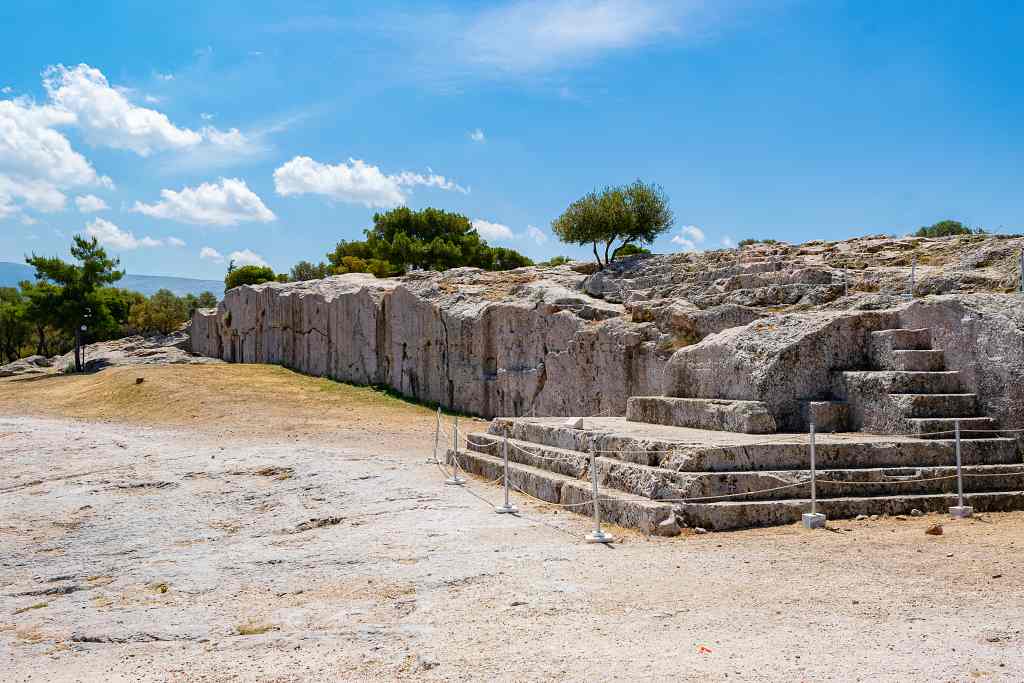
The Assembly
Male citizens of Athens who had completed their military training all participated in the assembly – the “ekklesia.” This numbered between 30,000 and 60,000, depending on the period and the population of the city. Many of them met regularly on the Pnyx, a hill very close to the Parthenon that could accommodate as many as 6,000 citizens.
The assemblies took place monthly, or perhaps as often as 2 – 3 times a month. Everyone could address the assembly and vote – which they did by a show of hands. Overseeing the proceedings were nine presidents – ‘proedroi’ – who were selected at random, and served just one term. As you see, unlike today’s elected and representative democracy, the democracy of the Ancient Athenians was direct – the citizens themselves voted.
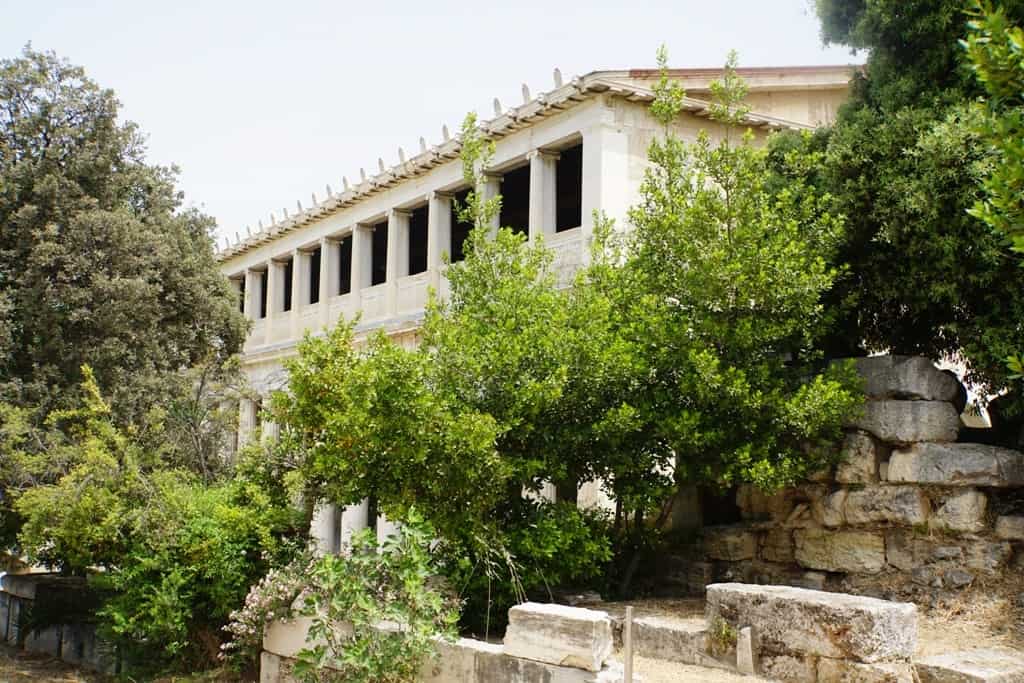
The Boule
There was also a “Boule” – a smaller body consisting of 500 who were, like the proedroi of the assembly, chosen by lot and for a limited term. Members could serve for one year and for a second, non-consecutive year.
This body held more power – they put forth and prioritized the topics that would be discussed in the assembly, they oversaw the committees and appointed officials, and in times of war or other crisis, they could reach decisions without the larger assembly meeting.
The Courts of Law
There was a third body – the law courts or “dikastiria.” This consisted of jurors and a body of chief magistrates, again chosen by lots. Rather than being open to all men over 18 or 20, the posts in the dikastiria were only open to men 30 and over. These numbered at least 200 and could be as many as 6,000.
The system of democracy of ancient Athens was far from perfect – it was carried out by a relatively small proportion of the total population. But every attempt was made to inhibit corruption and abuse of power. The random system of appointment and the full and direct participation of eligible citizens were fascinating first steps to the democracy that we cherish today.
4. Philosophy
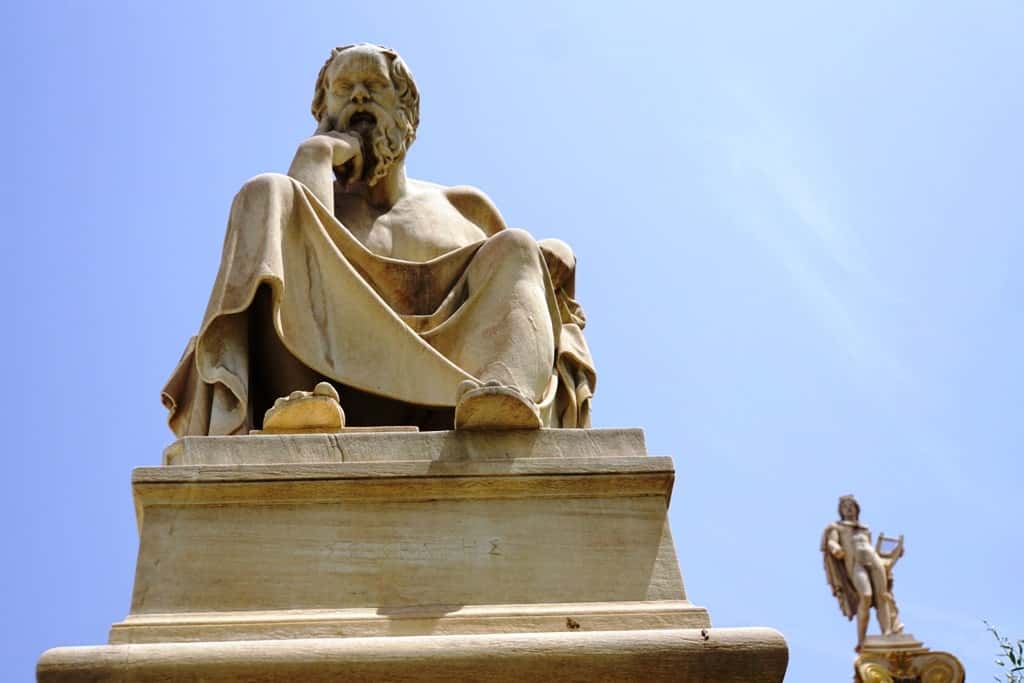
One of the things that Athens is known for today is something that they come by very easily through an important historical precedent – talking. Athenians are very social and love to talk. But not just any talk – they love to debate, to really get to the heart of a matter, to pursue a truth. In short, they love to philosophize.
Philosophy is central to the cultural heritage of every Athenian, and even in the most casual conversations you will hear references that tap into this timeless wisdom
Philosophy is a beautiful word. “Philos” is love; “Sophia” is wisdom. Philosophy is the pure, abstract love of wisdom. And the ancient Athenians were very, very devoted to the pursuit of knowledge.
The Philosophers of Ancient Athens
Fundamental concepts that shape Western thought were pioneered by some of the most fascinating minds in history, right here in Athens. It is amazing that such great minds lived at the same time or decades very close to one another.
Great Schools of Philosophy were established in Athens. The most famous is the Academy of Plato, established in 387 BC. It was in an idyllic olive grove outside the ancient city walls of Athens, in a spot dedicated to Athena. This is where another famous philosopher, Aristotle, studied for two decades (367 – 347 BC). However, the great philosopher did not succeed Plato – it was Speussipus who then took over the Academy.
Aristotle instead left Athens and settled for two years on the island of Lesvos, where he studied nature with Theophrastus. After that, he went to Pella, to tutor the son of Phillip of Macedon – Alexander the Great. Finally, he returned to Athens to establish his own school of Philosophy at the Lyceum, which he did in 334 BC.
The school was known also as the “Peripatetic” school – an ideal description, as the pupils, would think and debate not in classrooms but rather as they strolled around together – the word came from the Greek word for “walk.” The Lyceum itself existed long before Aristotle taught there. Socrates (470 – 399 BC) had taught here, as had Plato and the famous rhetorician Isocrates.
These are just a few of the many philosophers whose ideas flourished in ancient Athens and whose concepts continue to shape our thinking today.
The Schools of Philosophy Today
Interestingly, both of the famous philosophical schools of ancient Athens are visible today. The ruins of the Academy of Plato were discovered in the 20th century and the neighborhood where they are is now called “Akademia Platonos” in its honor.
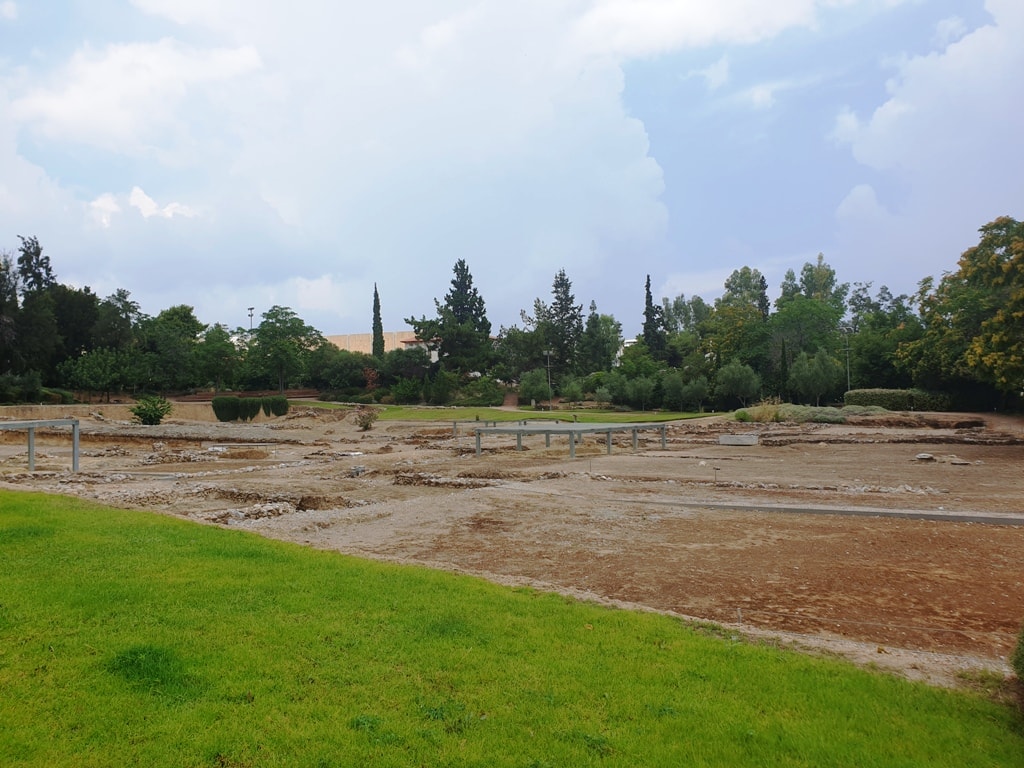
The Lyceum was discovered much more recently, in 1996. In digging the foundations on the proposed site of the Goulandris Museum of Contemporary Art in the Kolonaki neighborhood. Of course, the museum had to be built elsewhere, and Athens in the meantime gained yet another fascinating cultural monument – the ruins of the Lyceum.
Joining the Conversation
If this has inspired you, know that there are some excellent tours where you can become better acquainted with these great minds of the Ancient past, while quite literally walking in their footsteps. Check here and here. And if you feel you would like to catch up on a little background information, there are many excellent bookstores where you can enhance your knowledge – the best souvenir of a trip to Athens.
5. Sunshine
The “Light of Greece” has inspired generations of poets and writers. The Athenian sunlight has an unusual clarity and beauty. It’s almost like therapy, resetting your circadian rhythms and banishing away the blues.
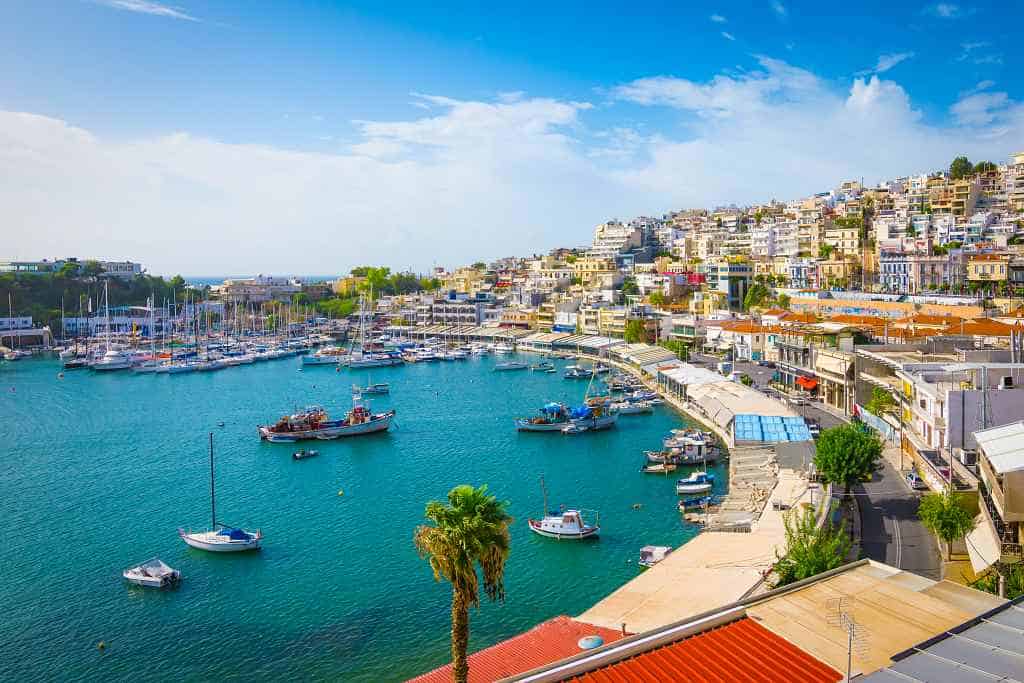
And it’s not just in summer. This is the southernmost capital on the European mainland. Athens ranks among Europe’s sunniest cities. There are but a few days per year when the sun does not break through the clouds, and there are nearly 2,800 hours of sunshine per year (compare that to some British cities for example, which can often get about half that).
That’s more than enough hours to go around. Even an Athenian getaway in winter should give you a nice boost of vitamin D, to say nothing of plenty of good cheer. Make sure to pack your sunscreen and shades, whatever month you decide to visit.
As for warmth, you’ll need a light winter coat from November through March, but who knows how much you’ll need it – there are plenty of sweater days in an Athenian winter. In fact the average highs even in December hover at 15 degrees (January drops to 13 degrees). December has the most rain – with rain falling for just over 12 days on average.
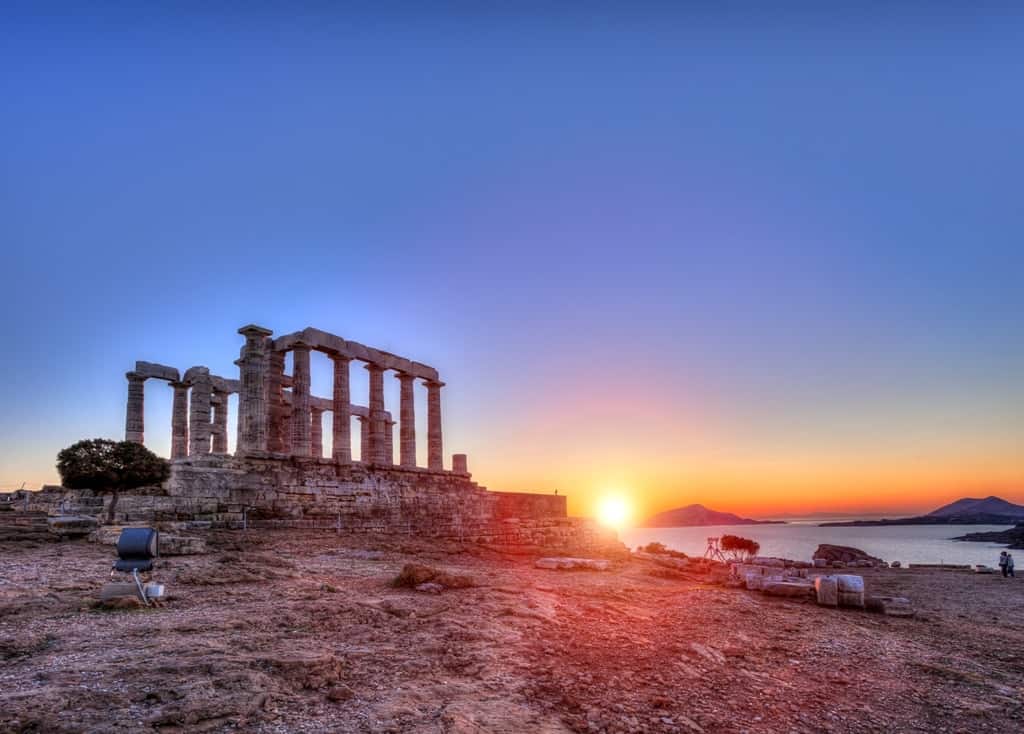
The Athenian Riviera
While we’re on the subject of sunshine, we should mention the Athenian Riviera. Travelers in the know love the fact that they don’t need to go far to have a classic beach holiday, Greek-style. Indeed, Athens is a major urban metropolis yet also has its own fabulous seaside.
The gorgeous stretch of Athens’ coastline has immaculately groomed full-service beaches, fine dining, great cafes and beach bars, and plenty of activities like watersports for an adrenaline boost.
To get the full experience, you might want to rent a car or use a transfer company to take you all the way down the coastline to the Temple of Poseidon at Sounion. The dramatic drive, hugging the shoreline, is just lovely. The temple itself is the setting for one of the most famous sunsets in all of Greece. It’s amazing to know this is so close to Athens.
6. Nightlife
As they come easily to Philosophy, Athenians come equally easily to their excellent and sociable lifestyle. Athenian nightlife has to be experienced to be believed. Unlike you may find in other parts of the world, the nightlife of Athens is by no means just for one specific age group.
Athenians are night owls – maybe it’s because of those balmy nights from Spring through Autumn. Or maybe it’s the Mediterranean sociability of the Athenians. Greece is famous for the way the Greeks embrace the joy in life at every opportunity, round the clock if necessary (there’s always the siesta to recover).
Athenian Nightlife: Variety
There is a huge diversity of nighttime diversions in Athens, for every age group and every type of interest, from culture hounds and avant-garde music aficionados to epicures and oenophiles.
Dining Out in Athens
Greeks love to dine out in groups, and a long evening around the table with friends is one of everyone’s favorite events. Even a simple taverna meal can – and often does – turn into a memorable evening lasting until well past midnight. In fact, the ouzerie – a classic Greek institution – is made for this.
No set plan, just an endless progression of meze (the Greek tapas) for a small bite, with plenty of sips and plenty of toasts in between. All age groups enjoy this ritual, from students to seniors and everyone in between. And as an aside – you’ll see plenty of families out too, with children happily playing among the tables or napping on somebody’s lap.
Drinking in Athens
Athens provides a host of civilized drinking experiences. The Greek capital takes advantage of its country’s excellence in wine production – check out the wine scene at the great wine bars of Athens, many of which specialize in Greek wine varieties.

And surely you have heard of ouzo. This all-Greek aperitif (to be labeled ouzo, it, in fact, must be Greek) is always sampled with snacks and with good company – “Yamas” to that.
Greece also has a new interest in craft beers – hoppy, complex, and delicious. Enjoy some at an Athenian brewpub.
Are Craft Cocktails more your scene? Athenian mixologists are true artists, very often employing local liqueurs, herbs, and other ingredients for a sophisticated taste of Greece, shaken or stirred.

For an even better cocktail experience in Athens, try a cocktail bar with a view – Athens is full of superb rooftop bars with stunning views of the Parthenon by night and other gems of the Athenian urban landscape by night.
Culture by Night in Athens
If you like an evening centered around a cultural event you are in the absolute best city. Again, there is a huge range of activities available in Athens. The National Theater and in summer the historic outdoor Herodes Atticus theater, as well as many other fine stages throughout the city, offer the best in International high culture – operas, ballets, and dramas.
Athens is also great for avant-garde culture, with many fascinating venues in old factories and other alternative spaces. Of course, Athens is also a favorite stop for international entertainers and musicians on European and world tours – there is almost always a big-name concert going on in the near future.
Going Out Greek Style
For a taste of true Athens, you can also join the locals at the “Bouzoukia” for traditional popular Greek music – love songs and so forth. Dress to the nines – no one looks better than the Greeks for a night out.
Then enjoy a very late night of singing along, showering your friends with trays of flowers, and sipping on top-shelf liquor. Bring some cash. It’s part of the Athenian mentality to forget one’s troubles briefly, sometimes overspending in the process.
For something a little more contemplative, you can also try to seek out some quality new Greek music – “Entechno” is the name of the genre. Or some traditional music such as Rebetiko – a kind of urban Greek blues – or even traditional music such as bouzouki or lyre.


